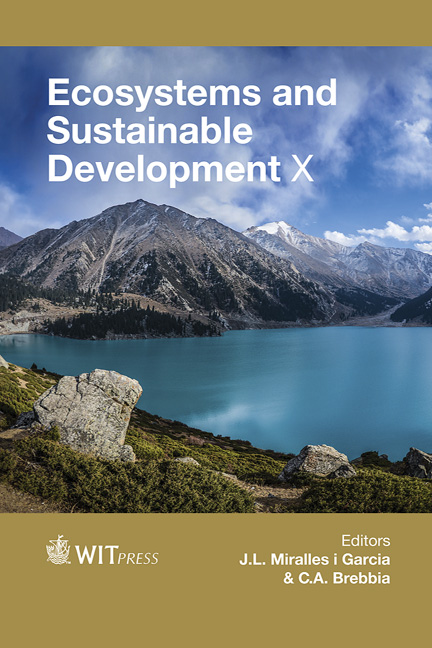Choice Of Revegetation Techniques For Degraded Areas Using Environmental Damage Assessment In The Amazon Forest, Brazil
Price
Free (open access)
Transaction
Volume
192
Pages
11
Page Range
407 - 417
Published
2015
Size
424 kb
Paper DOI
10.2495/ECO150361
Copyright
WIT Press
Author(s)
A. I. Ribeiro, F. H. Fengler, R. M. Longo, G. A. de Medeiros, G. F. Mello, A. P. Filho
Abstract
The success in environmental recovery process is highly dependent on the knowledge of the characteristics of the new environment formed. Knowledge about historical degradation, activities developed, aspects and negative environmental impacts of human activity, allied with the characteristics of the new environment formed, allows the definition of effective strategies to the environmental recovery process. In this sense there is a necessity to develop more effective techniques and proposals for environmental recovery in degraded areas especially those that are located in regions with high environmental relevance, and explored by activities which promote a high degree of change in the environmental components. This paper presents a methodology for recovery of mined areas, using the assessment of environmental damage to define the recovery strategies. The work was developed in the Amazon ecosystem in a region explored by Cassiterite mining. The environmental damage was assessed in terms of the physical and biotic environment components, listed from the environmental aspects and impacts of historical exploration. Physical and chemical analyzes of degraded substrates were used to support zoning processes and to select the recovery activities. The methodology allowed identifying different degraded conditions in substrates, and determining the most affected environmental components. It was possible to define appropriate actions to recover the location, consolidating a methodology to manage degraded areas by mining and other activities with similar levels of environment alteration.
Keywords
Amazon forest, mining, recovery, soil





